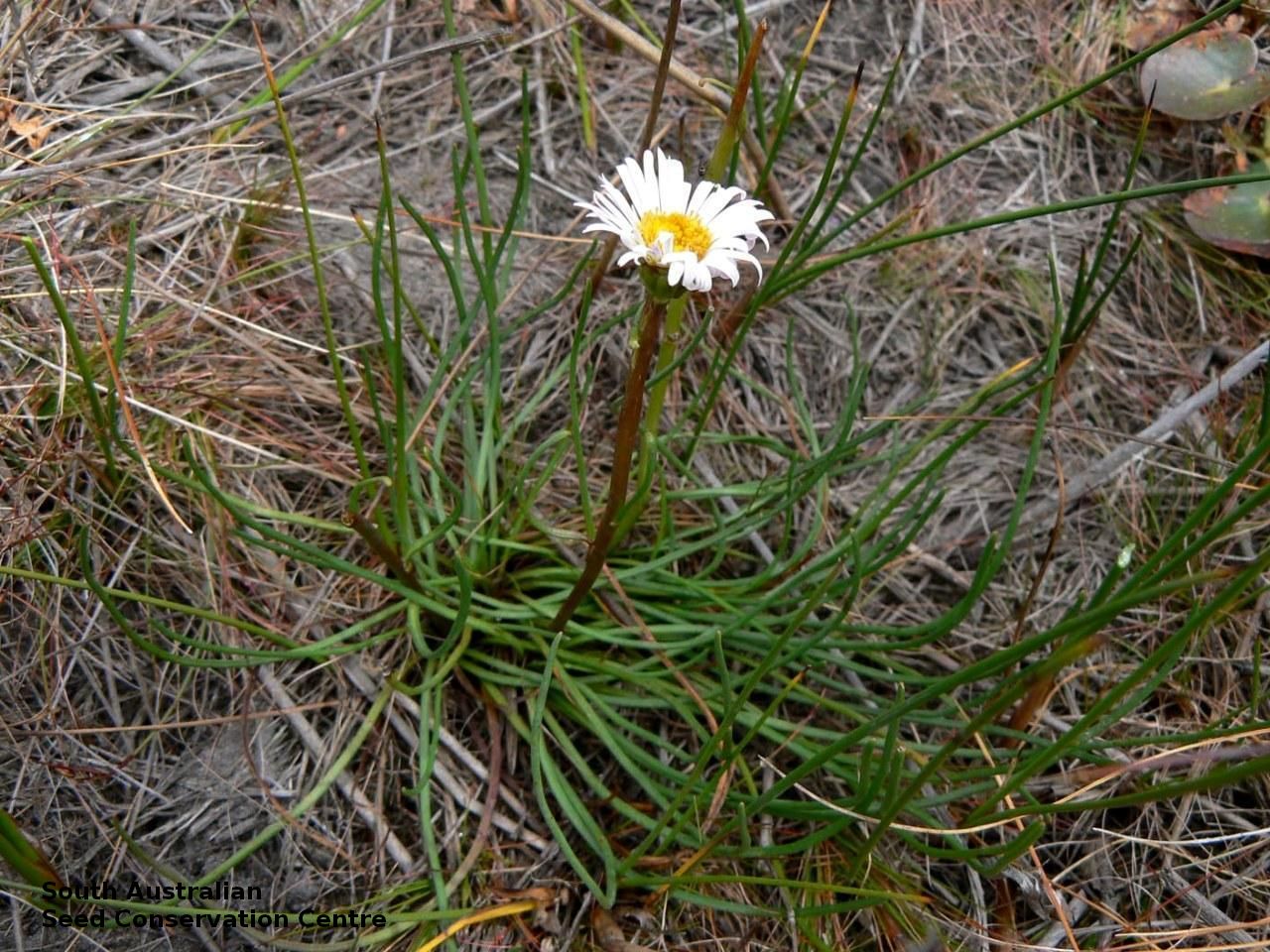
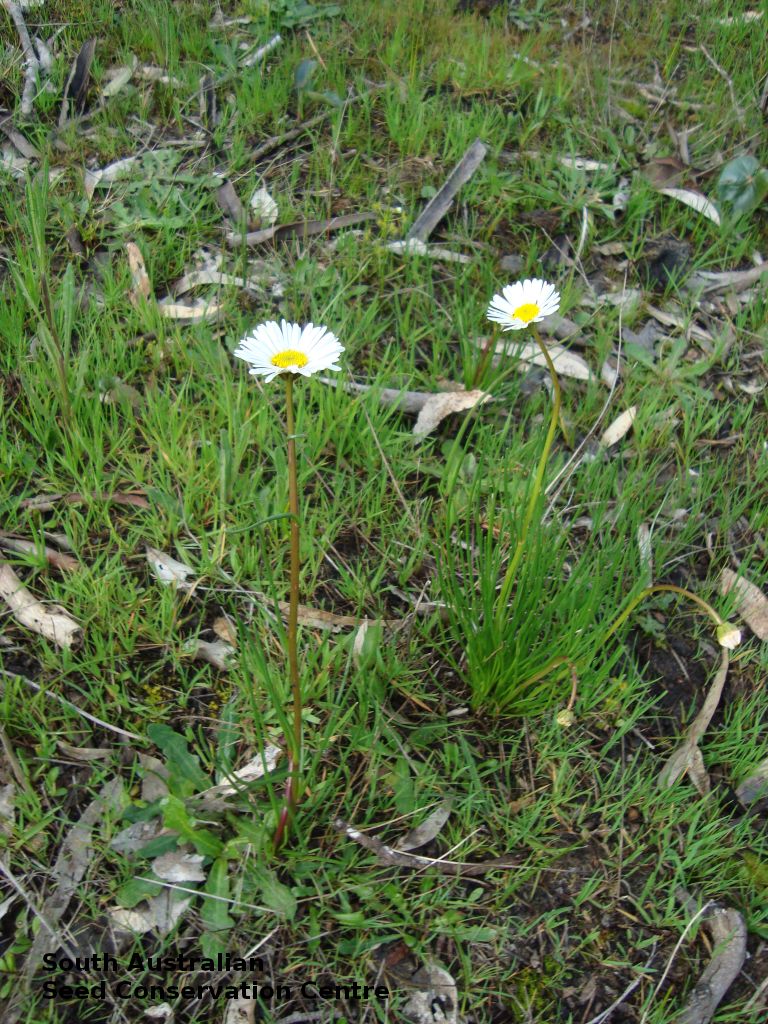
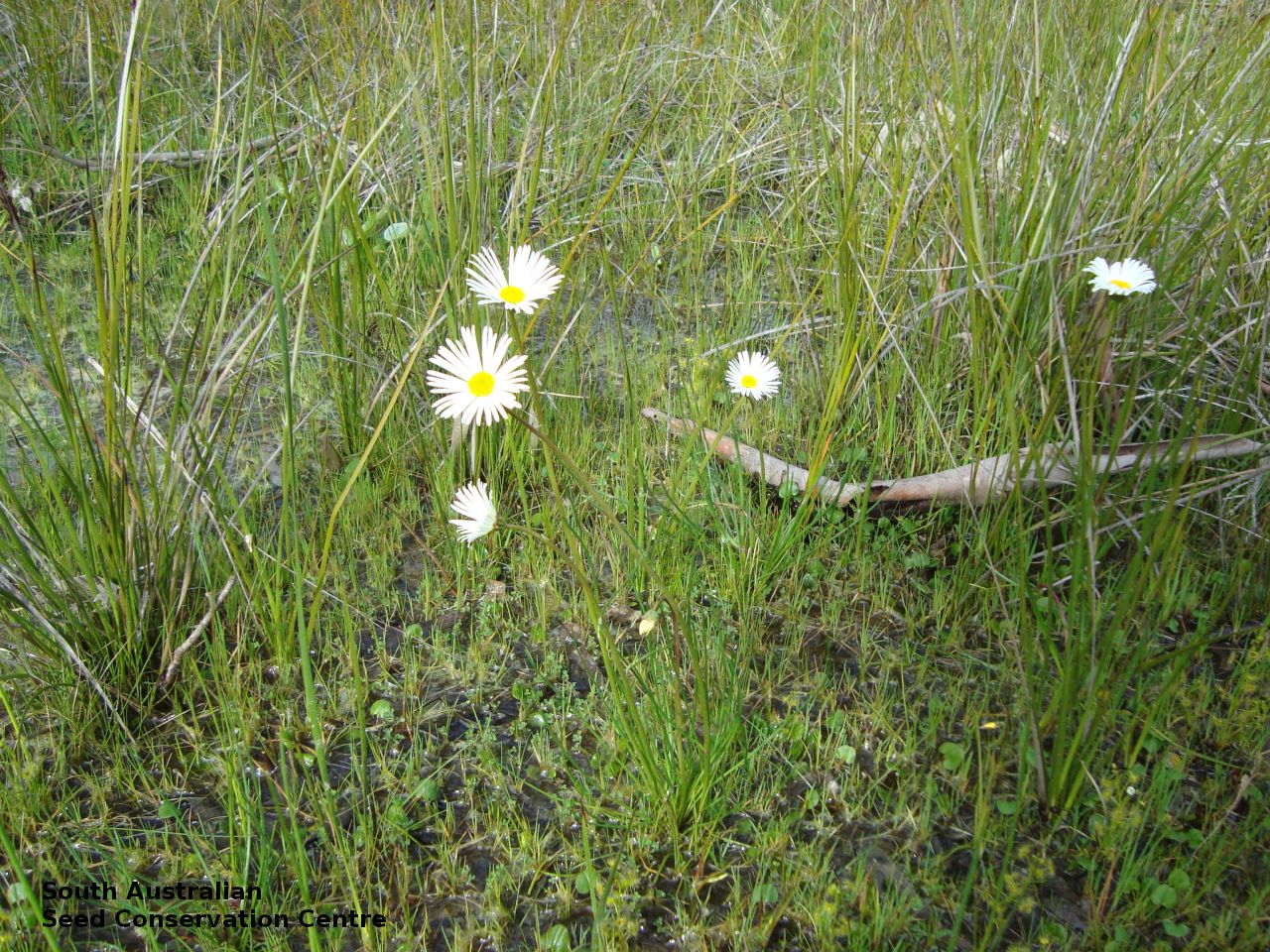
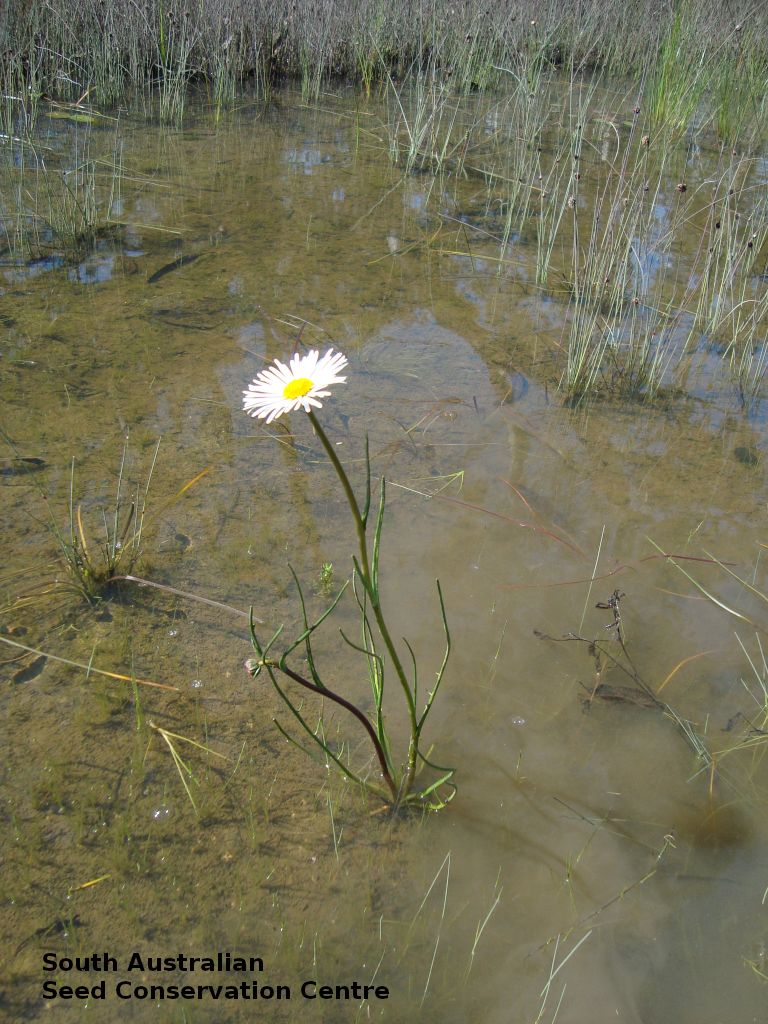
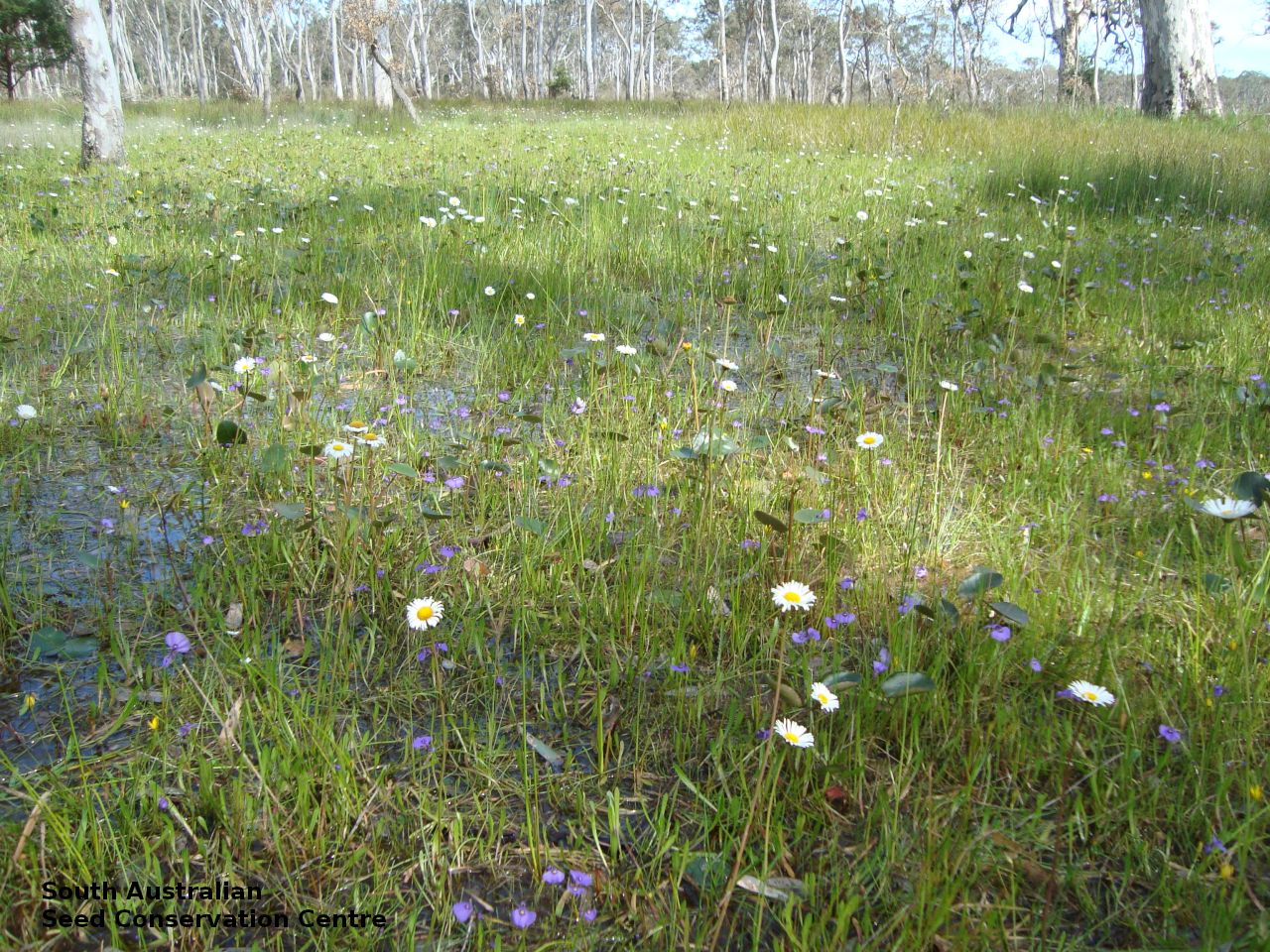
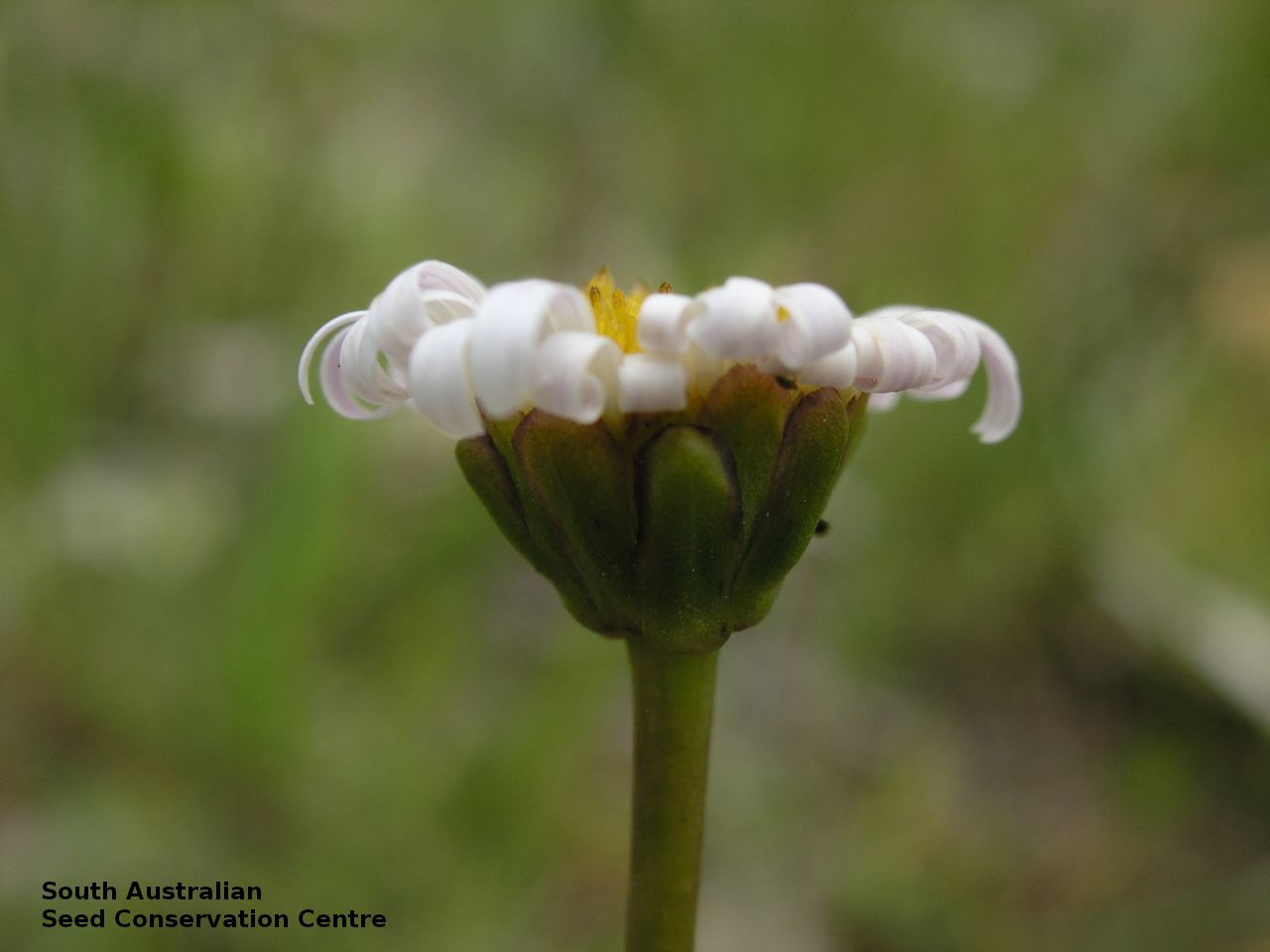
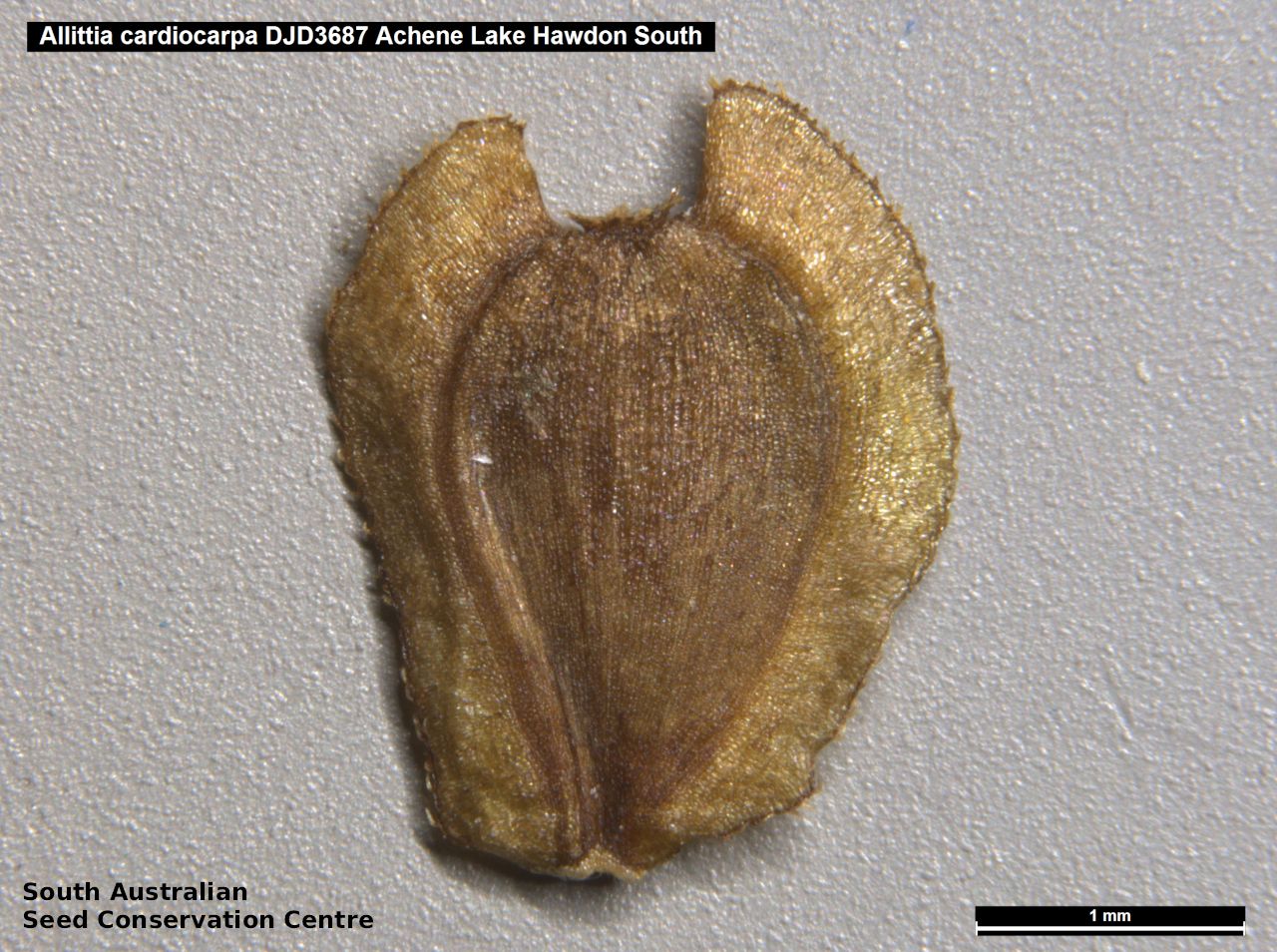
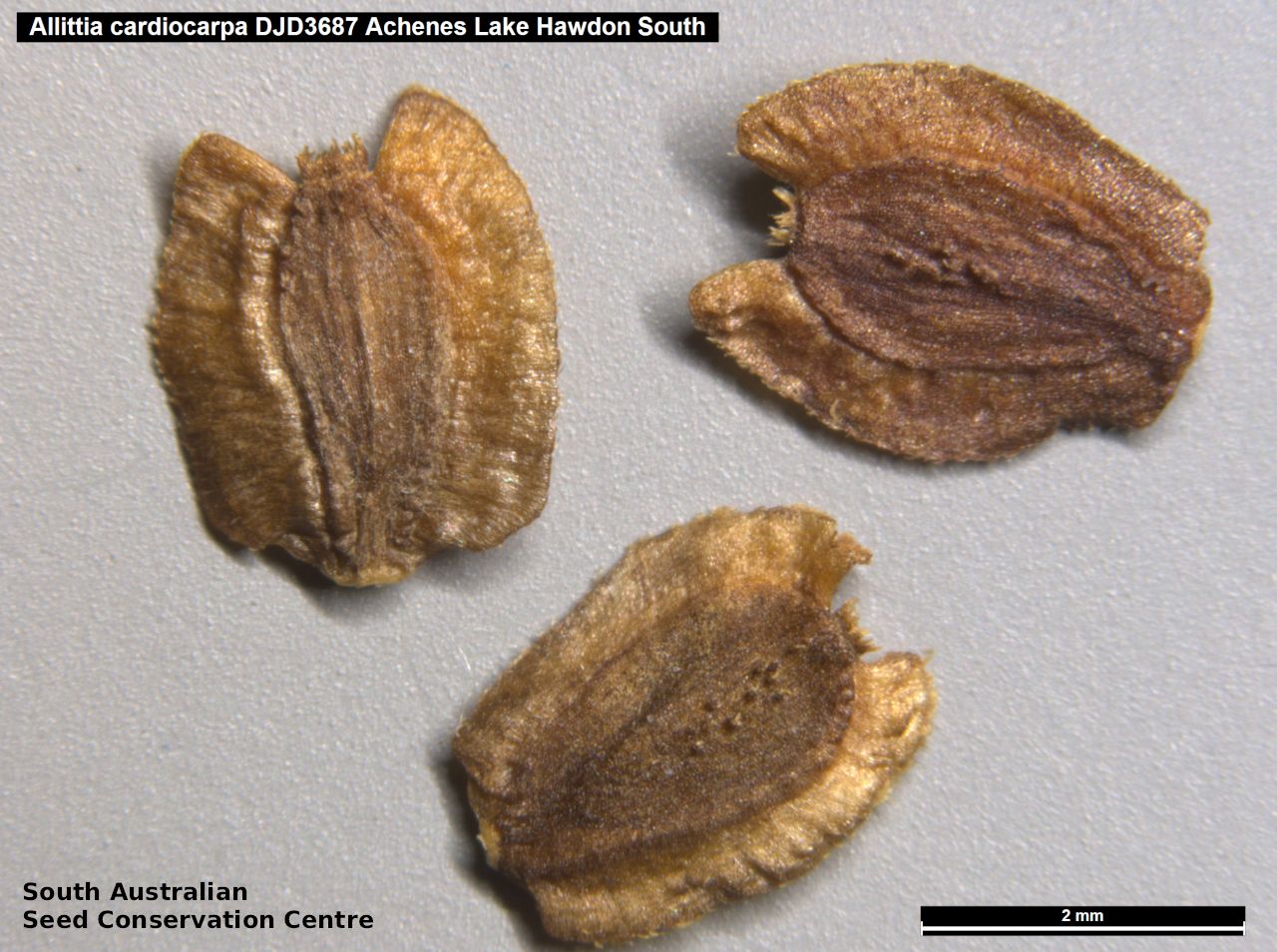


Botanical art
Prior names
Brachycome cardiocarpa
Brachyscome cardiocarpa
Etymology
Allittia commemorates William Allitt (1828 - 1893), who collected herbarium specimens, including the new lectotype specimen of Brachyscome cardiocarpa, in the south-west of Victoria while he was curator of the botanic gardens at Portland from the 1860s to the 1880s. Cardiocarpa from the Greek 'kardio' meaning heart and 'karpos' meaning fruit; referring to the shape of the achene.
Distribution and status
Found only in the lower South-east in South Australia, growing in swampy areas, plants often being partly immersed in water and commonly associated with sedges and wetland. Also found in New South Wales, Victoria and Tasmania. Native. Rare in South Australia. Rare in New South Wales. Common in the other states.
Herbarium region: South Eastern
NRM region: South East
AVH map: SA distribution map (external link)
Plant description
A perennial herb with round linear, basal leaves that dry off and re-shoot each year. Flowers are white, large and single, on a long stem up to 45 cm tall. Flowering between August and November. Fruits are large daisy-heads with numerous seeds, usually turning brown when maturing. Seeds are flat orange to brown elliptical seeds to 2.5 mm long, with serrated wings around the margins.. Seed embryo type is spathulate fully developed.
Seed collection and propagation
Collect seeds between October and December. Pick by hand mature heads that are turning brown and contain semi-hard, brown seed inside. Place the heads in a tray to dry for 1-2 weeks. Then rub the heads gently by hand to dislodge the seeds. Use a sieve to separate the unwanted material. Store the seeds with a desiccant such as dried silica beads or dry rice, in an air tight container in a cool and dry place. From two collections, the viability was high, ranging from 70% to 90%. Seeds are non-dormant, viable seed should germinate readily.
| Location | No. of seeds (weight grams) | Number of plants | Date collected | Collection number Collection location | Date stored | % Viability | Storage temperature |
|---|---|---|---|---|---|---|---|
| BGA MSB | 14,800 (5.75 g) 13,000 (5.05 g) | 100+ | 25-Oct-2006 | DJD632 South Eastern | 1-Aug-2007 | 70% | +5°C, -18°C |
| BGA | 1,400 (0.56 g) | 30 | 16-Nov-2010 | DJD2020 South Eastern | 1-Jan-2012 | 90% | -18°C |
| BGA | 560 (0.25 g) | 50+ | 30-Oct-2009 | TST843 South Eastern | 2-May-2017 | 100% | -18°C |
| BGA | 3,500 (2.15 g) | 50+ | 14-Nov-2017 | DJD3687 South Eastern | 30-Jun-2018 | 75% | -18°C |
Number of plants: This is the number of plants from which the seeds were collected.
Collection location: The Herbarium of South Australia's region name.
% Viability: Percentage of filled healthy seeds determined by a cut test or x-ray.